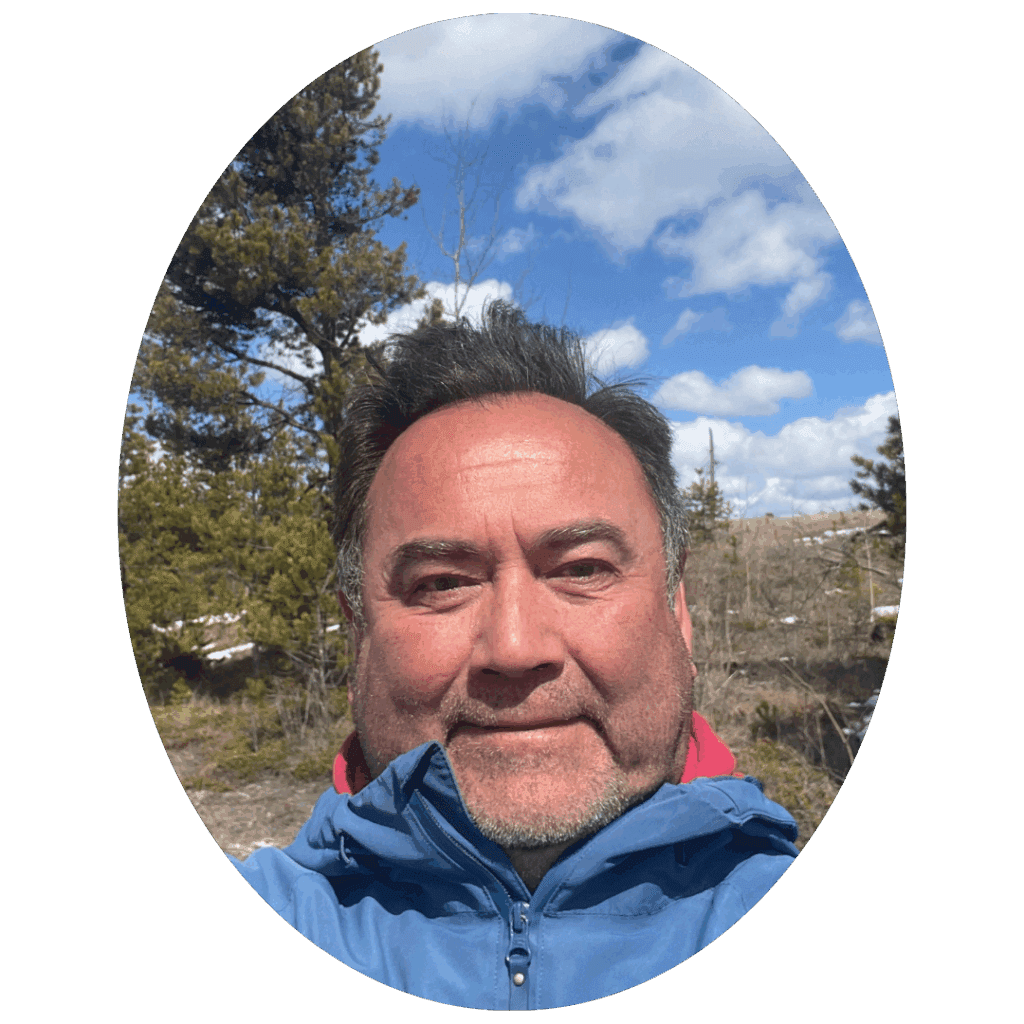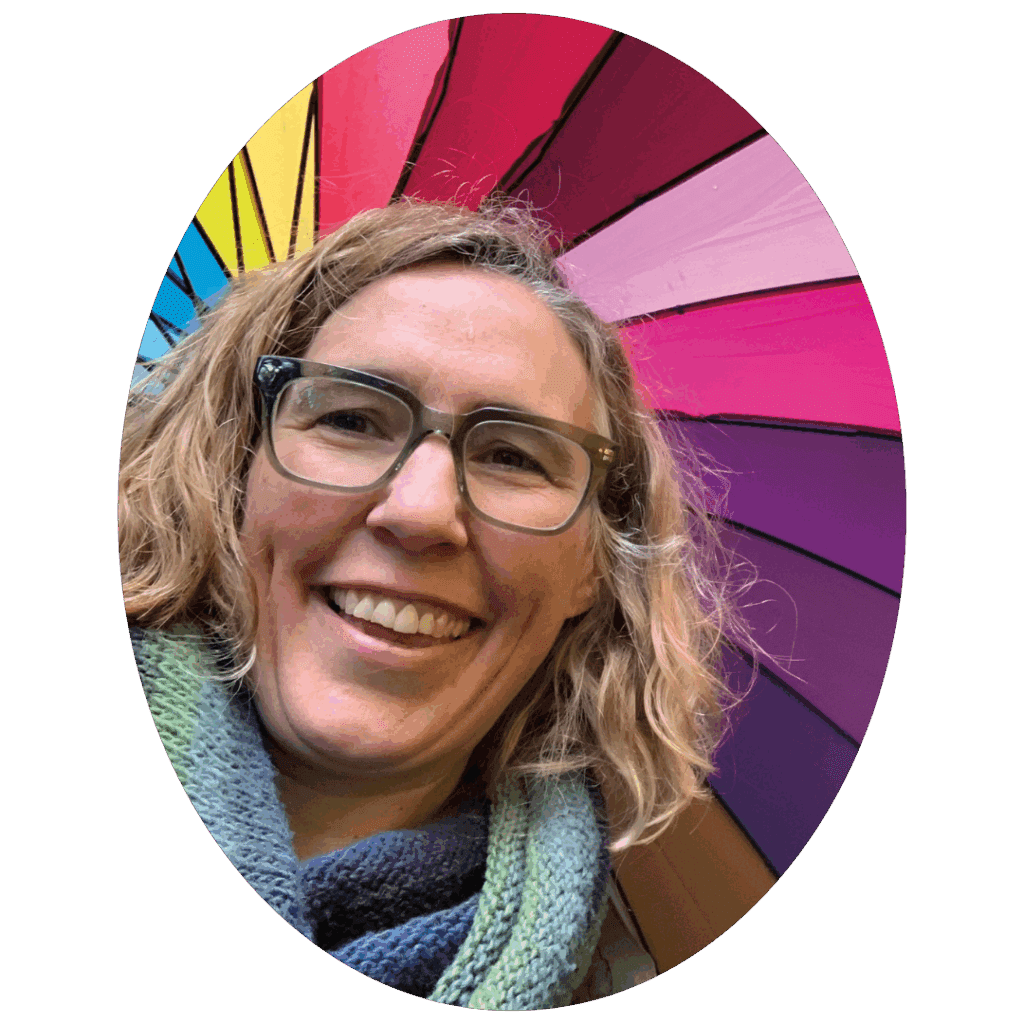In the new chapter book Two Tricksters Find Friendship, a young girl moves to a small island community where she and a local Indigenous boy form a strong friendship over the summer. When they begin the fourth grade together, the two find adventure while navigating the challenges and prejudices of their lives. Hear from authors Elder Johnny Aitken and Jess Willows on what inspired them to write this story.
Two Tricksters Find Friendship is based on your real-life friendship, which is so lovely! How did you two meet in real life, and what inspired you to turn your experiences into a book?
We began our work together years ago (2015) for the purpose of collaborating on ideas to increase Indigenous Education in schools. We knew one another as community members in the small community of Mayne Island. Johnny brought his background as an artist and community leader and Jess brought her background as a teacher; together we made a pretty nifty team!
Johnny met with Jess’s local school class regularly to help them learn about the community-welcoming figure, which Johnny had carved, and the history of Johnny’s family on Mayne Island. We also started collaborating around professional development sessions for teachers.
Johnny often refers to fumbling in his work as an artist. Looking back on this time, I realize it felt like we were fumbling in the sense that we hadn’t found a solid project to work together on—but in reality we were building a very strong foundation for future work together. Early on, we established how we would like to work together: authentically and intentionally. This meant ensuring we were sharing leadership in how we made decisions and discussing difficult topics in an open and vulnerable way.
The idea to write a book came from Johnny in 2019, and our meetings and discussions led to some ideas right away. The book would follow Johnny and Jessie as our younger selves and tell a story of reconciliation through friendship.
How did you two approach writing this book together? What did your collaborative writing process look like?
We approached writing through discussion on long walks and sitting outside. The decision to have our main characters have the same names as us as the authors just made sense! We were able to act out scenes to embody authentic responses for our characters to make it believable to the reader. A number of other characters are named after our family members. We knew what scenes we wanted to include in the book, which quickly became three books (and one middle-school book)! We called these our pearls or nuggets and then we set out how to weave them together. This involved lots of sticky notes on big sheets of paper to see the progression of the stories. We write everything together; we sit side by side and write each sentence together.
What are some things you learned from each other during the writing process?
We learned that if we’ve been writing together for over three hours we start to dissolve into giggles and silliness. We learned a lot about each other’s backgrounds and childhoods through writing together. We learned about each other’s process in this work: Jess likes to document and display things visually, and Johnny likes to act things out and process through walks and discussion.
What were some of your favorite sections to write in Two Tricksters Find Friendship?
We loved the scene where Johnny and Jessie were hiding from Aunty Joy and Grannie Annie in the salal, the scene where Jessie looks out the window of her house to see Johnny walking by and yells out “What are you doing with a broom?” and everything in the big house scene (chapter 10).
Raven is an important part of the story in Two Tricksters Find Friendship. What is the significance of Raven in Coast Salish culture?
Raven is a trickster and a teacher in Coast Salish culture. Raven holds up a mirror and is a conduit; they can drift in and out of the liminal spaces to find teachings.
Johnny and Jessie have a great role model and spiritual teacher in Steven. Did you both have mentors growing up that inspired you to create the character of Steven?
Johnny had a number of role models that helped to create this character: A social worker, a childcare worker and a good friend were really there when he needed them as a youth. Jess had a number of strong aunts growing up who she looked up to and who helped her discover her identity.
Johnny and Jessie explore reconciliation during the book. What does reconciliation mean to you?
We started this project with the perspective that reconciliation means to come back together, to reconcile. We both recognize that the relationships between Indigenous people and Canada could never really be considered “together” in a formal relationship that we would want to return to. So, while there is no “healthy” relationship to come back or return to, there is a respectful relationship and understanding to move toward. Our work together included deciding how to tell that story—what we need to include to express this understanding in our book and how our relationship as a white Canadian and an Indigenous Canadian represent this.
Friendships are so rewarding, but they can also be difficult! Do you have any advice for young readers on how to be good friends?
Be kind to one another, know that we are all different, accept everyone as they are, be curious and ask questions in a respectful way. Laugh a lot and have fun together! Play!
Is there anything you know now that you wish your younger selves knew growing up?
Johnny: I wish I knew that I would know how to cultivate and have really close friends as I got older.
Jessie: I wish I knew then that I could just be myself and everything would still be okay.
What do you hope readers will take away from the book?
To be curious, authentic, respectful and full of gratitude. To remember to notice and engage in reciprocity in your relationships.

Elder Johnny Aitken is an interdisciplinary artist, actor, writer, carver, filmmaker, activist and educator. Johnny’s mixed ancestry includes Coast Salish, Scottish and Haida and he self-identifies as a Two-Spirit First Nations individual. Johnny’s twenty-foot-tall carving of an Honouring Figure stands in the Emma and Felix Jack Park on Mayne Island—a park named after his grandparents from the Cowichan Tribes. As a self-proclaimed “cross-cultural bridge builder,” Johnny enjoys collaborating with members of both Indigenous and Settler communities and has dedicated himself to a lifetime career in creating stories that lead to a place of healing. He lives on Mayne Island, British Columbia.
Jess Willows has had a long career as a teacher in the Gulf Islands School District of British Columbia. With a bachelor’s and a master’s degree in education, Jess is currently pursuing a PhD in Educational Psychology and Leadership Studies at the University of Victoria while also working as a sessional instructor with the teacher education program. She has been involved with professional development (PD) for teachers, offering workshops and serving as the PD Chair. Jess also works with the BC Teachers’ Federation as a facilitator of the Teacher Inquiry Program and as a workshop facilitator throughout the province. She lives on Mayne Island, British Columbia.



